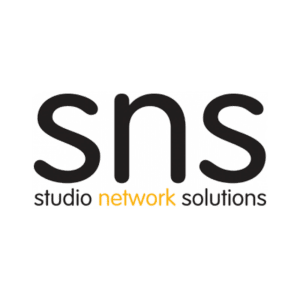The Bright Future of Studio Lighting: Trends, Technology, and System Integration Strategies
Broadcast2Post Podcast by Key Code Media
At Key Code Media, we believe that lighting systems are not just an add-on to a studio- they’re a foundational part of delivering clean, camera-accurate images. In modern studios, lighting directly affects image quality, workflow efficiency, and the success of remote or automated production.
This Broadcast2Post podcast and article explores the most common lighting issues we see in studios, how technology is evolving, and what it takes to design and install lighting as part of a broader production system.
The Cost of Cutting Corners: Why Cheap Lights Cause Expensive Problems
When budgets are tight, it may be tempting to buy low-cost LED fixtures. Unfortunately, we have seen many organizations suffer from this decision later. What appears to be a small up-front saving can turn into hours of troubleshooting and even unusable footage.
Common problems from using low-quality fixtures:
Flicker and Banding under high frame rate or fast shutter settings
Inconsistent Color Temperature, even across fixtures from the same vendor
Poor Beam Quality and Dimming control that results in harsh shadows or uneven exposure
Post-Production Complications when color shifts or flicker cannot be corrected in editing
Investing in reliable, tested fixtures prevents downstream issues and ensures consistent, professional results.
The Current State of Studio Lighting: Integrated, Intelligent, and Ready for Remote Use
Lighting systems have evolved significantly. It’s no longer enough to install a few static fixtures and call it a day. Studios today often require fixtures that can be controlled remotely, programmed for multiple formats, and designed to match both traditional sets and LED walls.
The major shifts in lighting technology include:
LED Wall and Virtual Set Compatibility, avoiding color shifts and reflections
Remote Production and Automation Support, with programmable presets and IP control
Camera-Sensor Awareness, matching light quality to the needs of high-end studio cameras
Lighting is now both a creative and technical function. It requires input from both designers and IT teams to get it right.
Why LED Fixtures Are Not Plug-and-Play
Switching from traditional tungsten lights to LED fixtures is not as simple as swapping bulbs. Every fixture has its own control protocol, color profile, and power requirements. Without careful planning, even high-end gear can behave unpredictably.
Issues we commonly troubleshoot:
Control Protocol Conflicts, such as Art-Net versus sACN, causing control system misfires
Color Drift Between Fixtures, even those labeled with the same color temperature
Firmware Mismatches, especially when fixtures are updated independently from control consoles
Power and Network Load Confusion, particularly when combining PoE, DMX, and mains-powered units
Integrators must test compatibility across the entire system and not just assume everything will work together based on spec sheets.
The Hidden Infrastructure Behind Lighting Systems
Lighting infrastructure today often looks more like a network backbone than a power circuit. Planning and installing this infrastructure is critical to long-term reliability and flexibility.
Key elements we now include in most projects:
DMX Over Ethernet, using Art-Net or sACN routed through managed switches
PoE and PoE+ for Lighting Fixtures, reducing the need for dedicated power lines
Studio Termination Plates that include Ethernet and control access at floor and ceiling levels
A modern lighting system relies on proper IT planning just as much as it does on creative intent.
Best Practices for Remote and Scalable Lighting Control
Many control rooms and operators are no longer in the same building as the studio. Lighting systems must be accessible remotely, programmable, and easy for technical staff to monitor and adjust.
Modern control designs include:
Central Control Consoles, with touch panels or software that can be accessed over VPN or the cloud
Fixture Monitoring Tools, to report heat, hours of use, and other system health metrics
Pre-Built Presets, customized for common show types to allow fast scene switching without reprogramming
The more scalable and automated the system, the easier it is to support different productions without requiring onsite expertise every time.
Designers and Installers Must Work Together
One of the most common failure points in a lighting system is the handoff between design and installation. A good concept drawing or fixture spec list is not enough. Without a shared plan for how the lights will be used and operated, the final result often falls short.
Common gaps in execution include:
Missing Creative Direction, where installers are left guessing how the space will be used
No Time for Programming or Cue Building, leaving fixtures powered on but unoptimized
Mismatch Between Budget and Expectations, especially when creative demands outpace infrastructure planning
We recommend collaborative kickoff meetings between creative and technical teams to avoid surprises later in the project.
The Lighting Tech Role Is Evolving
Today’s lighting technicians need more than traditional gaffer skills. They often act as the bridge between creative and IT, with responsibilities that stretch from camera calibration to VLAN configuration.
Skills that are now essential:
Understanding Camera Technology, including sensor behavior and exposure curves
Network Management, especially around static IPs, DHCP conflicts, and VLANs for lighting traffic
Programming and Automation, using tools like OSC, DMX software, or custom UI panels
When hiring or training, look for team members who can operate comfortably across multiple disciplines, not just hang and focus lights.
Recent Lighting Installations by Key Code Media
Our team has designed lighting systems for a wide range of environments—from control rooms and broadcast studios to field and event setups. Each project reflects the balance of creative goals and technical performance.
Recent highlights include:
Minnesota Vikings Broadcast Studio, featuring full IP lighting control and multi-format presets
New Year’s Eve Live Broadcast, with outdoor-rated LED fixtures and redundant cueing systems
U.S. Figure Skating Event Studio, with modular lighting kits used in various cities across the season
Our role typically includes everything from fixture selection to console programming and final operator training.
Maintaining Lighting Systems in a Networked Environment
Today’s lighting gear needs the same kind of maintenance and support planning as your broadcast switchers or control systems. Without proper upkeep, performance can degrade without warning.
Best practices for lighting maintenance:
Schedule Regular Firmware Updates, and always test before applying changes across the network
Monitor Fixture Health, especially heat cycles and lamp hours for early signs of failure
Backup Control Presets and Show Files, to allow quick recovery in case of system reset
We recommend including lighting in your IT and engineering maintenance plan, with routine checks and updates.
What’s Next: Lighting That Listens and Learns
The future of studio lighting will continue to integrate more deeply with production systems, camera data, and automation tools.
Emerging trends include:
Camera-Synced Fixtures, that auto-adjust output based on exposure or ISO data from live sources
AI-Driven Preset Systems, which can detect the talent’s location or show type and adjust lighting accordingly
Rundown-Integrated Lighting, that connects directly with newsroom systems to change looks based on segment types
Lighting is no longer a separate layer. It’s part of the show logic itself.
BROADCAST2POST SPONSORS
Big thanks to our annual partner sponsors for the podcast!








